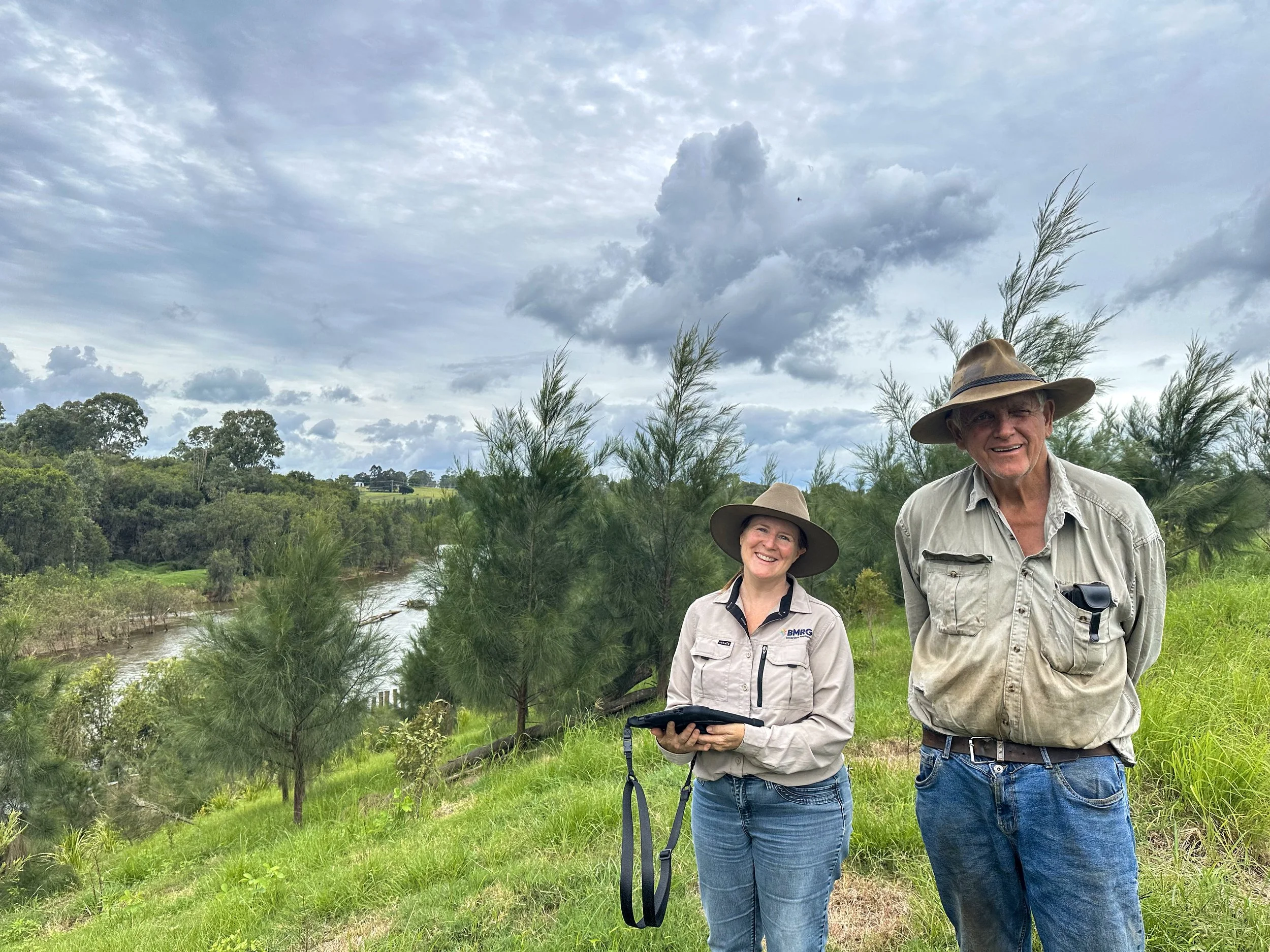Sustaining River Health: Key Insights from Mary River Maintenance Efforts
Leesa Kelly, BMRG Senior Project Manager with Miva landholder, Terry Schiefelbein.
This month, Burnett Mary Regional Group (BMRG) joined forces with the Great Barrier Reef Foundation to revisit key restoration sites along the Mary River, part of the Mary River Recovery Project that ran from 2020 to 2024. These visits were aimed at inspecting the maintenance works that were funded by the Foundation and assess current condition of the areas.
Since June 2024, the sites have received intensive maintenance every 2–3 weeks. The results are promising, but the team observed firsthand that nature’s challenges are far from over. Flooding, pest species, and soil instability remain ever-present threats, underscoring the need for at least three years of continued maintenance beyond initial restoration efforts.
“Both landholder and government commitment is absolutely vital,” said Leesa Kelly, BMRG Senior Project Manager. “Without it, these projects risk being undone by the next flood or weed outbreak. Landholders can play their part by having sustainable grazing plans and weed and pest management plans in place for these sites to thrive.”
Fencing on restored riparian area
Interviews with landholders revealed a recurring theme: floods. As climate patterns shift, smaller but more frequent flooding events are becoming increasingly disruptive—especially in areas with fragile, sandy, sodic soils. While some restoration sites have held strong through major flood events, smaller surges can cause more targeted damage, particularly at the base of riverbanks. Cyclone Alfred, though minor in the Mary catchment, raised water levels by 5–7 metres—enough to erode restoration gains at several sites. The worst event hit at the end of March which was a moderate to high flood in the catchment.
The pressure doesn’t end there. Invasive vine weeds like cat’s claw creeper, madeira, and glycine are a constant threat to young native vegetation, choking growth before it has a chance to stabilise banks. Feral pigs, deer, and foxes are also a problem—rooting through sensitive riparian areas and predating on native species like freshwater turtles.
To share knowledge and strategies for future approaches, BMRG will work with their project partner—the Mary River Catchment Coordinating Committee (MRCCC) to explore lessons learned and devise a plan for the future.
The Mary River Recovery Project is funded by the partnership between the Australian Government’s Reef Trust and the Great Barrier Reef Foundation. While funding for ongoing maintenance under the original project wraps up in June, BMRG and MRCCC are actively exploring new funding sources to ensure this critical work continues. Support from organisations like SEQ Water has been invaluable, and BMRG is now pursuing innovative approaches, including natural capital markets and grants tied to streambank remediation.
“Restoration doesn’t end with planting trees,” Leesa Kelly noted. “It’s a long-term commitment.”




